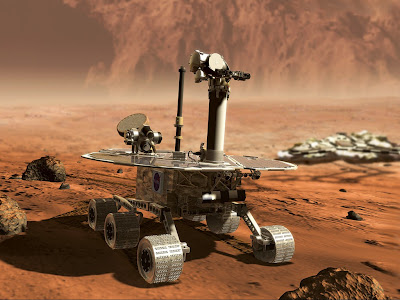
MESSENGER has delivered its first image since entering orbit about Mercury on March 17. It was taken today at 5:20 am EDT by the Mercury Dual Imaging System as the spacecraft sailed high above Mercury’s south pole, and provides a glimpse of portions of Mercury's surface not previously seen by spacecraft. The image was acquired as part of the orbital commissioning phase of the MESSENGER mission. Continuous global mapping of Mercury will begin on April 4.
“The entire MESSENGER team is thrilled that spacecraft and instrument checkout has been proceeding according to plan,” says MESSENGER Principal Investigator Sean Solomon, of the Carnegie Institution of Washington. “The first images from orbit and the first measurements from MESSENGER’s other payload instruments are only the opening trickle of the flood of new information that we can expect over the coming year. The orbital exploration of the Solar System’s innermost planet has begun.”
“The entire MESSENGER team is thrilled that spacecraft and instrument checkout has been proceeding according to plan,” says MESSENGER Principal Investigator Sean Solomon, of the Carnegie Institution of Washington. “The first images from orbit and the first measurements from MESSENGER’s other payload instruments are only the opening trickle of the flood of new information that we can expect over the coming year. The orbital exploration of the Solar System’s innermost planet has begun.”
















